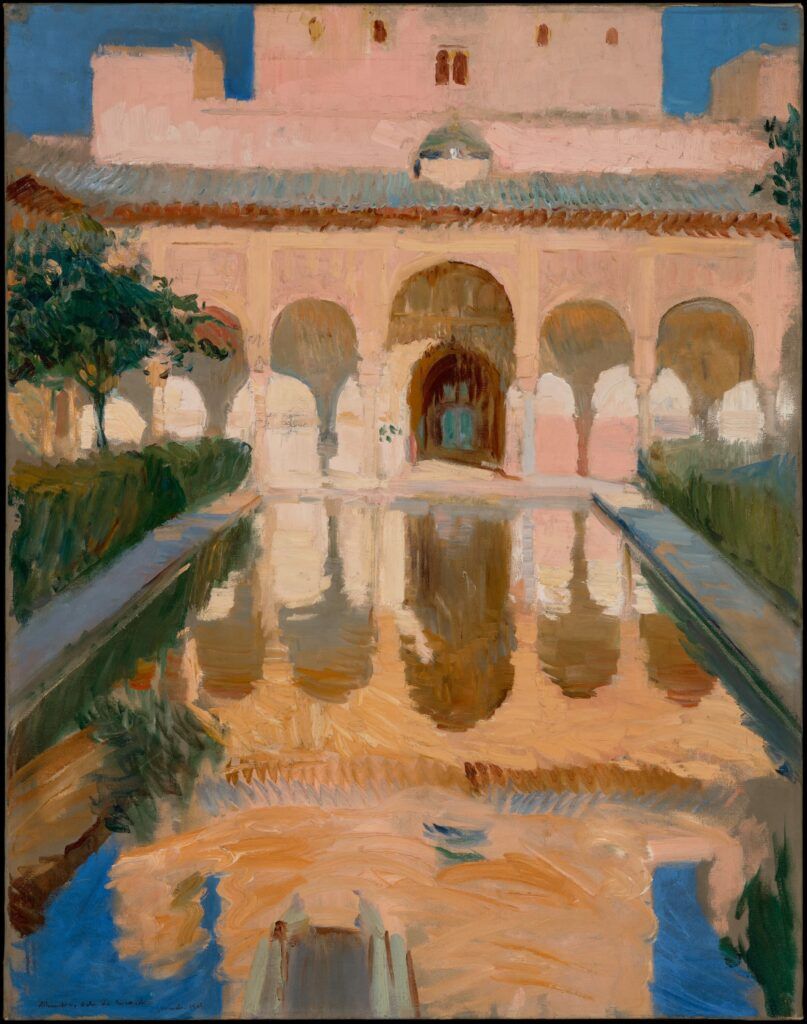The color of the water is Alhambra
Immerse yourself in a tour of the importance of water in the Alhambra through art.
The Alhambra is one of the architectural wonders that the Andalusian period bequeaths to us in the Iberian Peninsula. Erected on the upper part of the city of Granada, it represents the splendour of the Nasrid dynasty that built it. Its relationship with water is vital to understanding it.
Muḥammad I Ibn al-Aḥmar chose, in 1238, the hill of Sabika to erect the city where to locate his fortress and built the Alhambra. The first requirement would be to provide it with abundant water – from the Darro river – through the Royal Irrigation Canal or the Sultan.
The descendants of Muḥammad I would gradually transform it into the palatine city, with new palaces and royal palaces. The first was the Generalife, through which the Royal Irrigation Canal enters the Alhambra and which becomes the axis around which this medieval city is organized.
Roman civilization is recognized as the great hydraulic engineer to meet the needs of cities; The Andalusian company is credited with having expanded its use by developing water technology.
To guarantee irrigation water for agriculture and gardens, a well-calculated network of ditches was developed – which crossed the levels and ravines – cisterns, laundries, tanks and wells from which water was extracted by means of waterwheels moved by animal traction.
The practice of Islam incorporates water into religious architecture. This is how the baths next to the mosques and the basins where ablutions were carried out before prayer. The Nasarites, moreover, are credited with incorporating water into the architecture of palaces.
The Nasrid culture introduced water into the architecture of their palaces to improve the thermal comfort of the inhabited spaces by introducing small ditches, laundries and fountains.


Water, as a symbolic decorative element that allows mental images to be generated, creates mirrors with the surfaces of fountains and ponds, or with the arrangement of canals and fountains, as in the Courtyard of the Lions.
Water gives life to gardens; those of the Alhambra reached the zenith of beauty, turning the walled city into a paradise for the senses. Nasrid architecture became a world reference for having transformed inhabited spaces into natural landscapes.
From the ninth century, Sufi masters such as al-Junayd used the saying that “the color of water is the color of its vessel” to speak of the believer’s heart as a receptacle for Allah’s manifestations.
Thus, as a result of the presence of light, the water in the Alhambra takes on the colour of the hydraulic installation that contains it, which gives way to a divine epiphany.
In conclusion, in the capital of the Kingdom of Granada the color of the water is Alhambra.
The Alhambra goes beyond Granada and has influenced architects such as Antoni Gaudí. In some of his works there is a notable similarity with certain elements present in the Palace of the Lions of the Alhambra.
This is the case of Casa Vicens where the Catalan architect designed the waterfall in the garden, combining architecture and water to create comfortable spaces. The Gaudí Waterfall is part of the garden of the Water Museum.
















